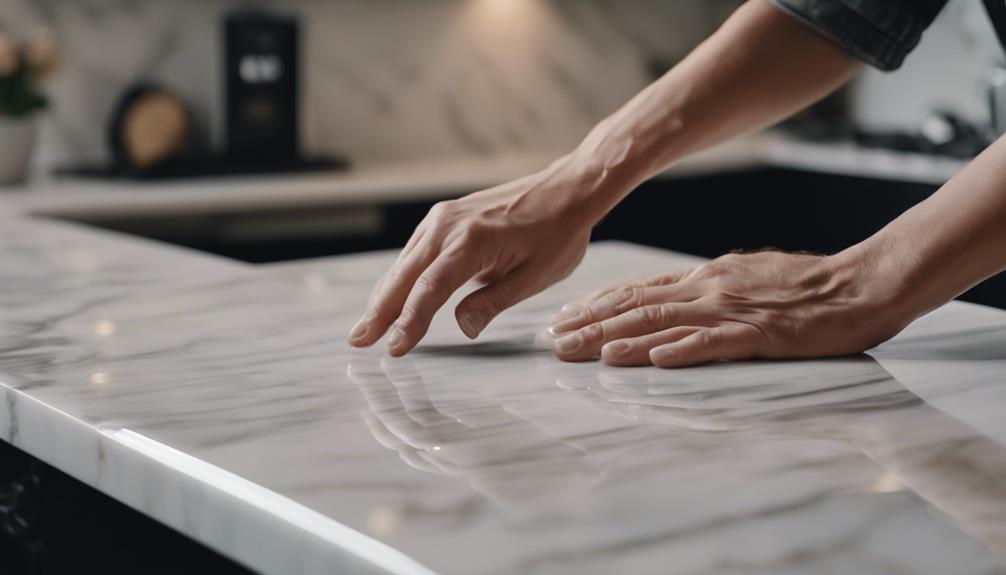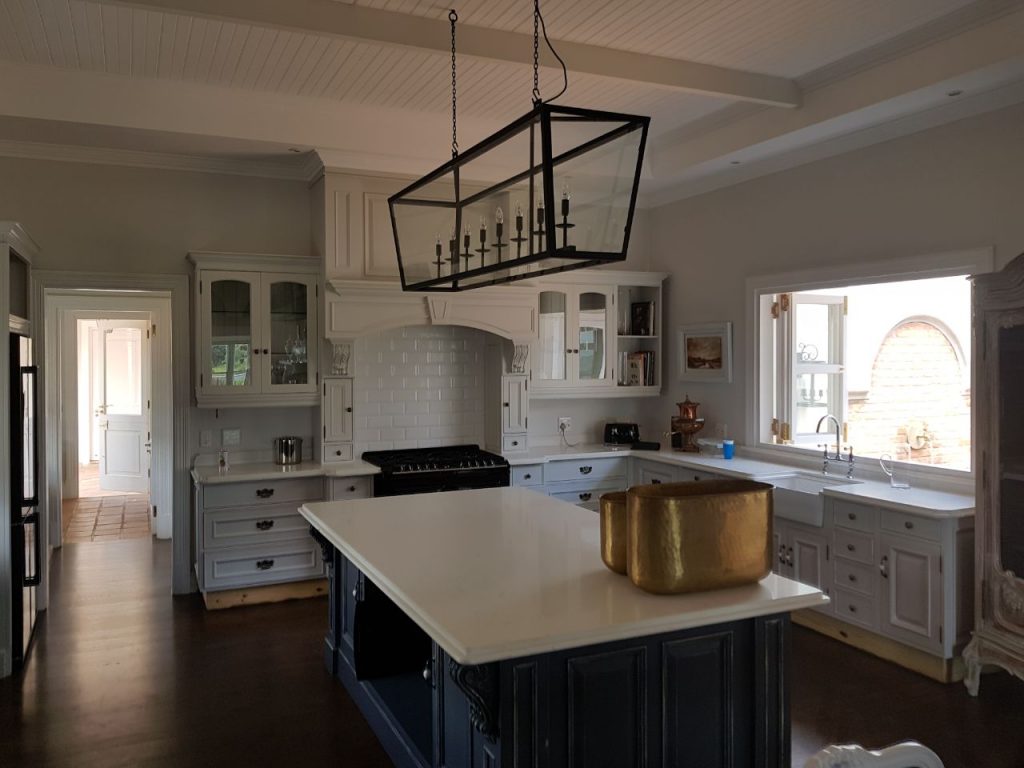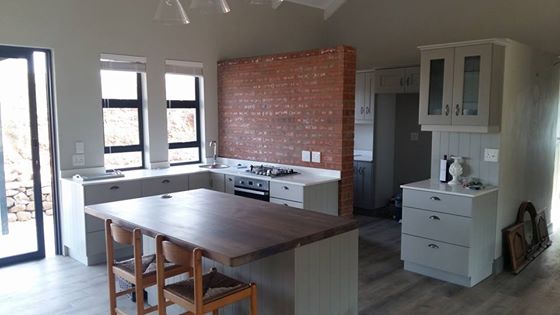Exploring the realm of marble fabrication reveals a world where precision and creativity converge to create stunning surfaces and architectural wonders.
The meticulous process of cutting, shaping, and polishing raw marble dominates this field, where craftsmanship and a keen eye for detail are paramount.
It's the expertise and techniques of marble fabrication professionals that transform simple marble slabs into magnificent works of art, elevating them beyond their practical uses to represent timeless elegance and beauty.
Marble Fabrication Tools and Equipment
Embarking on Marble Fabrication: Essential Tools Explained
When you're keen to start fabricating marble, it's crucial you've got the right tools and equipment by your side. Marble isn't just any material; it's luxurious and needs a gentle touch. A skill saw fitted with a diamond blade is your best friend for cutting marble slabs accurately. This setup ensures the edges are neat and smooth, avoiding any harm to the stone. Plus, having water sources and blade guides is a game-changer. They keep the blade cool and steady, making sure your cuts are on point every time.
Honing and Polishing: Bringing Out Marble's Shine
Next up, we can't forget about hand grinders and polishing pads. These tools are key for getting that perfect finish on marble surfaces, really bringing out the stone's natural splendour. And for that final touch? Buffers are what you need. They clean up the marble, leaving it looking shiny and professional. It's like giving your marble a spa day, ensuring it looks its best.
Fixing and Securing: The Final Steps
Now, for fixing those marble pieces firmly in place, tile adhesive and cup guns come into play. These aren't just any tools; they're your assurance that the marble will stay put, looking gorgeous for years to come. It's about making sure your hard work stands the test of time.
In essence, diving into marble fabrication without these specialised tools is like trying to paint without a brush. By having them in your toolkit, you're set up for success, ready to create stunning marble pieces that reflect quality and craftsmanship.
Cutting and Shaping Marble Slabs
Precision cutting techniques play a critical role in shaping marble slabs to the desired specifications. Grasping the tools involved in the process and considering the size of the slabs are key factors in achieving the desired outcome.
Precision Cutting Techniques
Mastering Marble: The Art of Precision Cutting
When it comes to transforming marble slabs into stunning pieces, nothing beats the sophistication of CNC machines. These advanced tools are absolutely essential for carving out precise shapes and designs.
Opting for a vertical stance during the cut minimises the risk of the marble breaking. If you have to go horizontal, make sure there's ample support to keep things steady.
A constant flow of water is more than just a cooling agent; it's a precision enhancer. It keeps the cutting edge from getting too hot, ensuring that your cuts are sharp and clean.
Fine-tuning your cutting techniques isn't just about ticking off boxes on a design brief. It's about elevating the beauty of your final marble masterpiece.
Achieving that perfect cut is crucial. It's not just about making sure your design looks good; it's about ensuring the piece functions well and stands the test of time in terms of quality.
The Why Behind the Cut
Let's talk about why these techniques matter. Vertical cutting positions are favoured not just because they're efficient, but because they significantly reduce the risk of damaging the marble. Consider the difference between a carefully supported slab and one that's left vulnerable; it's quite clear why the right support matters.
Then there's the magic of water. It doesn't just cool down the cutting area; it actually makes the cut more precise. Imagine cutting through marble as smoothly as butter – that's what a steady stream of water can achieve.
But why go to all this trouble? Because the details matter. The right cut can transform a simple marble slab into a work of art. It's what sets apart a functional countertop from a statement piece in your home.
Achieving Perfection
So, how do you ensure your marble cutting is spot-on? It's all about precision. Whether it's following the intricate lines of a design or ensuring the edges are perfectly smooth, the quality of your cut will define the final product.
Shaping Tools Overview
Crafting Marble Slabs: Essential Tools and Techniques
When you're working with marble slabs, it's all about precision and that perfect finish. To get there, you need the right set of tools for the job. Let's chat about what you'll need for cutting and sculpting marble like a pro.
Cutting Marble: The Right Tools Make All the Difference
First off, cutting marble isn't a task you can do with just any old saw. You'll need a skill saw, but not just any skill saw. It has to be equipped with a diamond blade. Why a diamond blade, you ask? Because marble is tough, and you need something even tougher to cut through it cleanly and precisely.
But there's a trick to it – you can't let your blade get too hot. That's where water comes into play. A steady stream of water not only keeps the blade cool but also helps keep the dust down, making your work area cleaner and safer.
To make sure your cuts are straight as an arrow, blade guides are your best friend. They're like the reliable mate who makes sure you stay on the straight and narrow, ensuring your marble slabs look top-notch.
Finishing Touches: Polishing and Honing
Once you've cut your marble, it's all about the finish. That's where hand grinders and polishing pads come in. These tools help smooth out any rough edges and give your marble that gleaming look that screams quality.
And for that final touch? A buffer is key. It's like giving your marble a spa day, leaving it looking its best and ready to impress.
Slab Size Considerations
Selecting the Right Marble Slab Size
When you're looking to cut and shape marble slabs, especially the stunning Carrara marble, size really does matter. It's not just about what fits in your space; it affects everything from the cutting process to the end look of your project. Let's break this down a bit.
Marble slabs can vary in size, typically starting from about 1.2 metres by 2.4 metres and can go up to 1.5 metres by 3 metres. This variation depends a lot on where it's quarried and the type of marble you're dealing with. It's crucial to get your measurements spot on. Why? Well, it helps you use the material most efficiently and cuts down on waste. Nobody likes to see beautiful marble go unused, after all.
If you're dreaming of a seamless design for your kitchen counters or want a floor that looks like it's made from a single piece of marble, you'll be wanting those larger slabs. They give that uninterrupted elegance that's hard to beat. But, if it's a detailed sculpture you're after, smaller slabs might be your best bet. They're easier to manage and can be just as stunning.
For those bespoke projects that require a bit more finesse, advanced cutting technology is your friend. Tools like waterjet cutters or bridge saws are perfect for working with oversized slabs or for intricate designs. They're game-changers, allowing for precision cuts that manual tools just can't achieve.
In short, picking the right slab size isn't just a box-ticking exercise. It's about matching your vision with the practicalities of marble fabrication. Whether it's a grand countertop or a delicate sculpture, getting this step right sets the foundation for a magnificent result.
Polishing and Finishing Techniques
Polishing marble is a key step in enhancing its natural beauty and shine, while honing can achieve a matte or satin finish for a different aesthetic appeal.
Techniques such as buffing for shine, sealing for protection, and detailing edges carefully are crucial for achieving desired results in marble finishing.
Buffing for Shine
Buffing for Shine: A Crucial Step in Marble Care
Buffing is key to making marble look its best, giving it that gloss and lustre we all love. It involves different grades of buffing pads and special compounds to really make the surface shine.
- By using a variety of buffing pads, you can control how glossy or smooth the marble gets. It's a bit like choosing the right sandpaper for a woodworking project – the finer the pad, the smoother and shinier the finish.
- The magic doesn't stop with the pads, though. Buffing compounds play a huge part in bringing out the marble's natural beauty. Think of them as the polish that transforms a dull stone into a radiant surface.
- Getting rid of those pesky imperfections, scratches, and dull spots is all in a day's work for proper buffing techniques. It's about making sure the surface isn't just shiny but also flawlessly smooth.
- After all that buffing, the marble isn't just ready to look pretty. It's also prepped for sealing, which protects its beauty and makes sure it lasts.
Why Buffing Matters
Buffing isn't just about making marble shiny; it's about enhancing its natural beauty and ensuring its longevity. By carefully selecting the right pads and compounds, and applying them with skill, you can transform an ordinary marble surface into a masterpiece of home decor. Plus, the process prepares the stone for sealing, which is like giving it a protective coat against wear and tear.
Sealing for Protection
Sealing Marble Surfaces for Enhanced Protection
If you've got a marble countertop or any marble surface at home, you'll know how stunning it looks when it's shining and free of stains. But to keep it looking that way, there's a trick: you need to seal it. Why? Because marble, as gorgeous as it is, is pretty porous. This means it can easily soak up spills, leading to stains, and even get etched by acidic substances. So, sealing it with a top-notch impregnating sealer is the way to go. This doesn't just throw a protective shield over your marble; it does so without dimming its natural charm.
How Often Should You Seal Marble?
Now, you might wonder, 'How often do I need to do this?' Well, it really depends on how much action your marble surface sees. If we're talking about countertops that are frequently used, aiming for a sealant refresh every one to three years is a smart move. This isn't a one-size-fits-all kind of deal, though. The more you use it, the more attention it'll need.
DIY Marble Sealing: A Step-by-Step Guide
Sealing your marble doesn't require a call to the professionals; it's a DIY job you can take pride in. Start with a clean slate by thoroughly cleaning the surface. Then, grab your sealer and apply it evenly across the surface. Be generous but not wasteful. After you've given it some time to sink in, wipe off any excess. This simple act of care can significantly extend the life of your marble surfaces, keeping them looking as pristine as the day you got them. Plus, it's a great way to prevent any potential damage from spills or scratches.
Why Sealing Matters
In essence, sealing is not just about maintaining the appearance of marble; it's about safeguarding your investment. Marble isn't just any material; it's a statement piece that adds value and beauty to your home. By sealing it, you're ensuring it stays that way for years to come. So, the next time you admire your marble's gleam, remember, a little sealing goes a long way in keeping it that way.
Detailing Edges Carefully
Crafting Marble Edges with Precision
When it comes to marble fabrication, shaping and finishing the edges with precision is key. This process is all about meeting the specific needs of clients, whether they're looking for countertops, tables, or various other surfaces. It's not just about following a set pattern; it's about bringing a vision to life.
Customisation Options for Every Taste
From the simple elegance of a bevel to the more complex beauty of ogee and bullnose profiles, the options to customise marble edges are vast. This variety allows individuals to choose the perfect style that complements their space. Each profile has its own character, capable of transforming a simple slab of marble into a masterpiece.
Polishing for Perfection
Polishing isn't just a step in the process; it's what brings out the inherent beauty of marble. By enhancing the stone's natural luster and achieving a high gloss finish, polished edges make the marble look more luxurious and inviting. It's like adding that final touch of gloss to a painting that makes all the difference.
Honing for Texture
Not everyone wants their marble to shine, and that's where honing comes in. This technique gives the marble a matte or satin finish, changing both its appearance and its feel. It's perfect for those looking for a more subdued elegance, adding depth and character without the high shine.
The Importance of Edge Profiling and Finishing
Edge profiling and finishing aren't just about aesthetics; they add to the marble's overall appeal, making it a true piece of art. These techniques are what give marble surfaces their depth, character, and elegance. It's about creating something that stands out, something that's not just seen but also felt and appreciated.
In essence, the careful detailing of marble edges is what transforms a simple piece of stone into a bespoke element of your space. It's the difference between the ordinary and the extraordinary. Whether you're drawn to the sleekness of a polished finish or the understated beauty of a honed edge, it's clear that the devil is in the details.
Edge Profile Options for Marble
Choosing the Right Marble Edge Profile
Picking the right edge profile for your marble surfaces isn't just about the looks; it's also about making sure it fits the way you live and use your space. For those classic and versatile options, you can't go wrong with a bevel, bullnose, or eased edges. They're pretty much the go-to because they blend in so well with any style, whether your home is decked out in the latest modern trends or you're more about that timeless, traditional vibe.
But hey, if you're aiming to make a statement or just want something a bit more 'you', then diving into the world of custom edge profiles could be your jam. Ogee or dupont edges can seriously amp up the personality of your space. Think of it this way: if your marble countertop was wearing an outfit, these custom profiles would be like choosing the perfect accessories to complement the look. Whether your space screams cutting-edge modernity or whispers classic elegance, there's a custom profile that can make your marble surfaces really pop.
Why It Matters
Now, you might wonder, 'Why all the fuss about edge profiles?' It's simple. The edge profile does more than just cap off the look of your marble surface; it ties the whole room together. Plus, it's not just about the eye candy. The right edge profile can make your marble countertops more user-friendly. Rounded edges, for instance, are less likely to chip and are safer for homes with little ones running around.
So, when you're mulling over which edge profile to go for, think about the vibe you're going for and how the space will be used. It's a decision that marries form and function, ensuring your marble surfaces are as practical as they are beautiful.
Choosing your marble's edge profile is a bit like picking the right frame for a piece of art. It's the finishing touch that can elevate the overall look and feel of your space. So take your time, consider your options, and don't be afraid to go for something that truly reflects your style. After all, it's these little details that make a house feel like a home.
Maintaining Marble Countertops

To keep your marble countertops looking spotless and sturdy for years, a bit of TLC is required. Here's how you can ensure they always look their best:
Regular Cleaning
First up, keeping your marble surfaces clean is key. Just a quick wipe with a gentle soap and water mix will do. It's simple, yet effective in keeping that shine.
Say No to Harsh Cleaners
Marble doesn't take kindly to harsh chemicals. Using anything acidic or abrasive can leave unsightly marks. So, avoid strong cleaning agents like bleach or vinegar. They're more trouble than they're worth on marble.
Annual Sealing is a Must
Think of sealing your marble countertops as giving them a shield. Once a year, apply a high-quality sealer to fend off stains and stop moisture from sneaking in. It's a bit like putting sunscreen on; it prevents future damage.
Tackle Spills Straight Away
Spills are inevitable, but how you deal with them can make all the difference. Wipe them up quickly to prevent any lasting damage. Marble can be a bit of a drama queen when it comes to stains and etching, so prompt action is crucial.
Troubleshooting Common Marble Fabrication Issues
Navigating the Hurdles of Marble Fabrication
In the world of marble fabrication, we often bump into a few pesky problems like chipping, cracking, getting stains, seeing our beautiful slabs warp, or struggling to match those intriguing veins. Let's chat about how to tackle these, shall we?
Avoiding Chipping
Chipping can be a right nuisance, cropping up when we're cutting or shaping our marble. This usually happens if we're not too careful with our tools or if we get a bit heavy-handed. The key here is to keep a steady hand and remember that marble isn't as tough as it looks. A gentle approach and the right tools will keep those edges smooth and chip-free.
Cracking Down on Cracks
No one likes to see a crack in their beautiful marble, right? Cracking can sneak up on us if we're not using the proper cutting techniques or if our marble experiences a sudden change in temperature. Think of marble like a bit of a diva; it doesn't do well with dramatic changes. So, keeping the environment stable and using a skilled technique can prevent those unsightly cracks.
Stain Prevention
Stains are the bane of any marble lover's existence. Whether it's a spill from your morning cuppa or an oil splash from cooking, these marks can ruin the look of your marble. The trick is to seal the marble surface properly and clean up any spills asap. Remember, marble is quite porous, so sealing it well is like giving it a good shield against those pesky stains.
Warding Off Warping
Warping sounds a bit dramatic, doesn't it? But it can happen when marble dries unevenly, isn't stored right, or goes through wild temperature swings. Keeping your marble slab flat and in a stable environment can help avoid this. Think of it as making sure your marble is comfortable and not stressed by its surroundings.
Mastering Vein Matching
Lastly, vein matching is a bit of an art form. It's about making sure the patterns in the marble line up just so, which requires a keen eye and a bit of patience. It's important because it affects how seamless and cohesive the final product looks. Imagine trying to piece together a jigsaw puzzle where the pieces almost fit but not quite – that's what we're trying to avoid.
Conclusion
To conclude, becoming a master at marble fabrication is like being an artist and an engineer at the same time. It's about choosing the most beautiful marble pieces, using the best tools and tricks to cut, shape, polish, and finish them until they shine like stars. Imagine transforming a rough, cold marble slab into a smooth, gleaming masterpiece that catches the eye and touches the heart. It's about knowing all the ways to make the edges look perfect, customizing each piece to make it unique, and understanding how to keep it looking amazing for years.
At Allstone Solutions, we're passionate about helping you achieve that perfect balance between beauty and durability in your marble creations.
If you're dreaming of stunning marble countertops or breathtaking architectural features but don't know where to start, reach out to us. Whether it's granite installations, marble installations, CNC stone engraving, engineered stone, or just looking for the best tips on installation and maintenance, we've got you covered. At Allstone Solutions, we're here to guide you through every step, ensuring your visions come to life in the most beautiful way possible.
And remember, if you're ready to take the next step in your marble project, don't hesitate to request a quote from us. We're committed to providing you with the expertise and quality craftsmanship needed to create something truly extraordinary. Let Allstone Solutions be your partner in turning your marble dreams into reality.
















